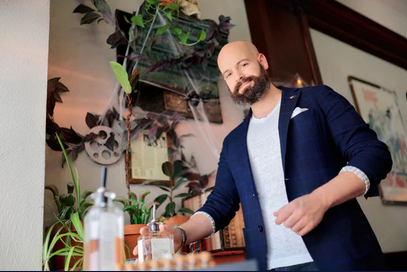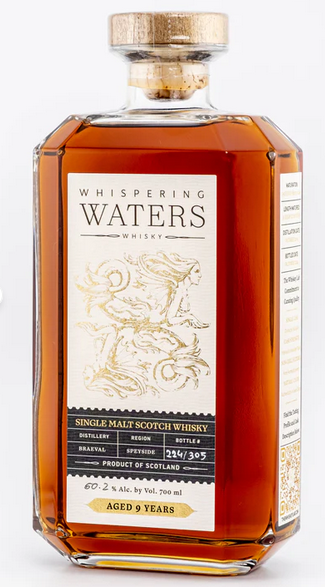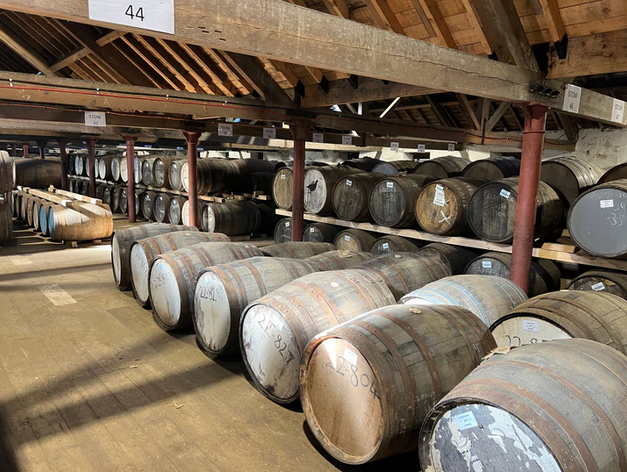At the 2025 Houston Scotch Whisky Society Spring Event, I had the pleasure of meeting Jay Roberts, one of the minds behind The Whiskey Lab, a boutique operation shaking things up in the world of single cask whisky. Among their impressive pours, a stunning 9-year Braeval stole the spotlight, showcasing not just quality but the kind of cask selection that speaks to deep knowledge and passion.
Jay’s approach to whisky blends an analytical mind with an explorer’s heart. A former physicist and Navy veteran, his journey from the rigors of nuclear training to the nuanced world of single malt speaks volumes about his dedication. From humble sips of Laphroaig 10 in upstate New York to launching The Whiskey Lab as a gateway for boutique bottlers, Jay’s whisky story is as layered and fascinating as the drams he now helps release. In this exclusive Whiskey Network interview, Jay dives deep into his origins, vision, and what’s next for The Whiskey Lab.
“It really is storytelling. When someone has a whisky in their hand, it’s not just the nose, taste, and finish. It’s who they’re with, the mood, the memory. That’s what makes a dram unforgettable.”
Jay Roberts, The Whiskey Lab

Let’s start with your story. How did you first get involved with whisky, and what led you to co-found The Whiskey Lab?
It all started during my Navy training in upstate New York when a roommate brought home a bottle of Laphroaig 10. I thought I hated it, but kept going back. That intense flavor had a grip on me. Soon, I found myself drawn to Lagavulin 16, and whisky became part of a broader journey. After recovering from a medevac and head injury, I was stationed in Hawaii, where I rebuilt myself. The Manifest coffee shop became my haven, with great coffee and the largest whisky selection on the island. I started to taste whisky differently, appreciating its complexity.
In 2017 when I met my wife in Chicago while I was stationed in Hawaii, she ordered Lagavulin 16 on our first date! In 2020, I was deep into an EMBA at Chicago Booth during COVID and started a whisky club. That club introduced me to independent bottlers and rare finds. Eventually, I bought a 25-year-old Girvan cask for my newborn son and realized there was no real path for Americans to bring personal casks home. That led me to pursue the licensing and creation of what became The Whiskey Lab.
Initially, I explored starting a distillery, but the economics didn’t add up. Instead, I leaned into the indie bottling model and The Whiskey Lab was officially born in January 2024. The name stuck, blending my physics background with a desire to experiment. We added the Whispering Waters line to introduce Scotch to bourbon lovers. We also became a pipeline for overseas indie brands to enter the U.S. market. It’s been a whirlwind since.
The 9-year Braeval you poured at the HSWS Spring Event was phenomenal. What’s the story behind that cask?
Jack at Uncharted Whisky messaged me, saying, “Jay, you’re going to want to try this,” in his thick Scottish accent. He had a line on some Braeval casks. I wanted to do a comparative experiment, same distillery, three finishes: ex-bourbon, oloroso, and PX. I chose the PX-matured cask, bottled just before it turned 10 to make WhiskyFest in November 2024.
What really stood out was its balance. At 60.2% ABV, it drank softer than expected. A deep, rich profile that showcased why cask strength matters, you can always add water, but you can’t take it out.

The Whiskey Lab emphasizes experimentation. What makes a cask “Lab-worthy”?
I ask myself: Can I find this on the shelf? Has anyone done something similar? Would I pay for it?
The Whiskey Lab exists to bridge the gap between what consumers want and what the market usually offers. For the Whispering Waters line, the goal is to convert bourbon drinkers to Scotch. Our 27-year-old Girvan did that beautifully. Our next releases, North British 35 and the Braeval, continue that journey.
You’ve built a reputation for transparency and education. Why is that important to you?
Because whisky is more than just the liquid, it’s an experience. That’s why we bottle at cask strength, with no chill filtration or added color. I focus on sharing the story behind the bottle: the business decisions, the technical process, and the path it took to get to the glass.
But I leave the tasting notes to the drinker. I want people to explore the whisky on their own terms. The setting, the company, the mood, all of that shapes the experience. When you understand where a whisky came from and why it exists, it becomes more than a drink. It becomes a memory.
What sets The Whiskey Lab apart from other independent bottlers coming to the U.S.?
We partner with brands rather than offer “pay-to-play” services. The big indies like Gordon & MacPhail or Signatory have their pipelines. Small producers don’t. We help them navigate the U.S. market without monthly fees or huge commitments. We have skin in the game.
How do you balance accessibility and uniqueness?
Every release comes with risk, but that’s part of the mission. America is a vast and diverse market. There’s always an audience somewhere; it’s just a matter of connecting the right whisky to the right people.
Some expressions are undeniably niche, like our 5-year Chain Pier or the 33-year-old Bruichladdich. We only brought over a single case of each. But if the liquid is exceptional, we’ll go the extra mile to make it available. That’s the commitment: quality first, even if it’s only for a few.

Looking back, what bottle surprised you the most?
The Braeval 9.97. I thought it might be too intense, but it was a hit at WhiskyFest Chicago. Also, our Glenallachie 10 (62.1% ABV, fully Oloroso matured) sold out at an LA event. You just never know.
How do you see the American consumer evolving?
People are seeking uniqueness. Unfortunately, many get stuck with overpriced NDP releases using similar bulk distillate. The Whiskey Lab is what they’re looking for: real transparency, global indie bottlers, and something different.
What do you want to see more (or less) of in whisky over the next five years?
I’d like to see far less of the cask investment hype. It’s misleading, often predatory, and ultimately harms the industry. The reality is stark: most craft distilleries in the U.S. average just $14,000 a year in whisky sales. Many are teetering on the edge of bankruptcy.
At the same time, you’ve got firms trying to sell newmake Scotch casks for $30,000. That’s not investment, it’s exploitation. I want to see more transparency, better education, and a community that protects its own from these kinds of schemes.
What’s next for The Whiskey Lab?
We’ve got some exciting things ahead:
- A 50-year-old and a 40-year-old Invergordon coming soon.
- Cask share programs so groups can customize their own bottlings.
- Five new indie brands joining our pipeline, including Ferguson Whisky and Glaschu Spirits.
- East Coast expansion with a warehouse in Virginia and a future tasting room near D.C.
- And our “Skin-in-the-Game” launch, offering Scottish indie bottlers a U.S. sales channel that’s more sustainable and consumer-focused.
Final Thoughts
Jay Roberts is not just bottling whisky; he’s building bridges between passionate producers and thirsty American drinkers. With a commitment to storytelling, transparency, and excellence, The Whiskey Lab is redefining what it means to be an indie bottler. We’ll be watching closely as their next chapters unfold.
Slàinte Mhath!



